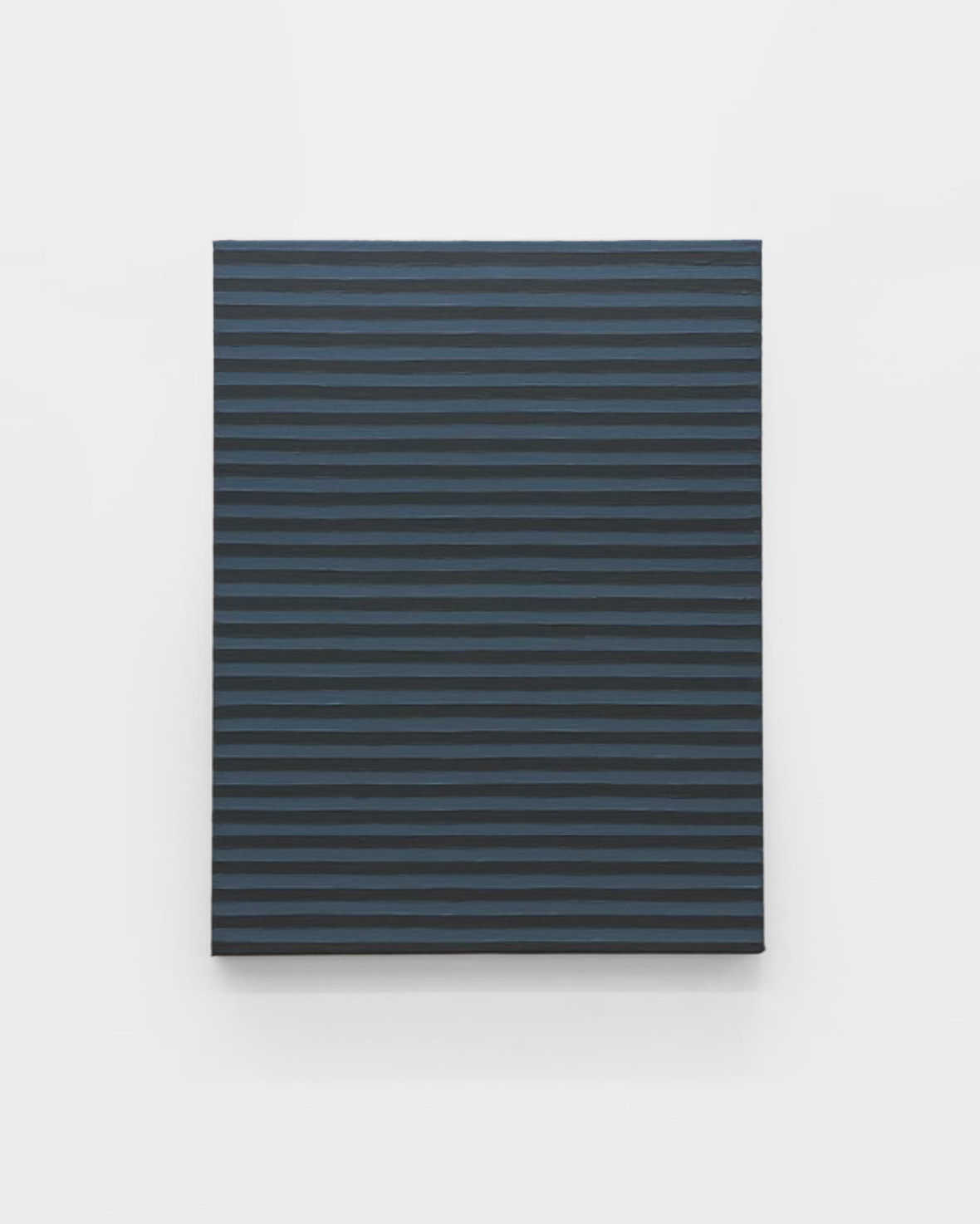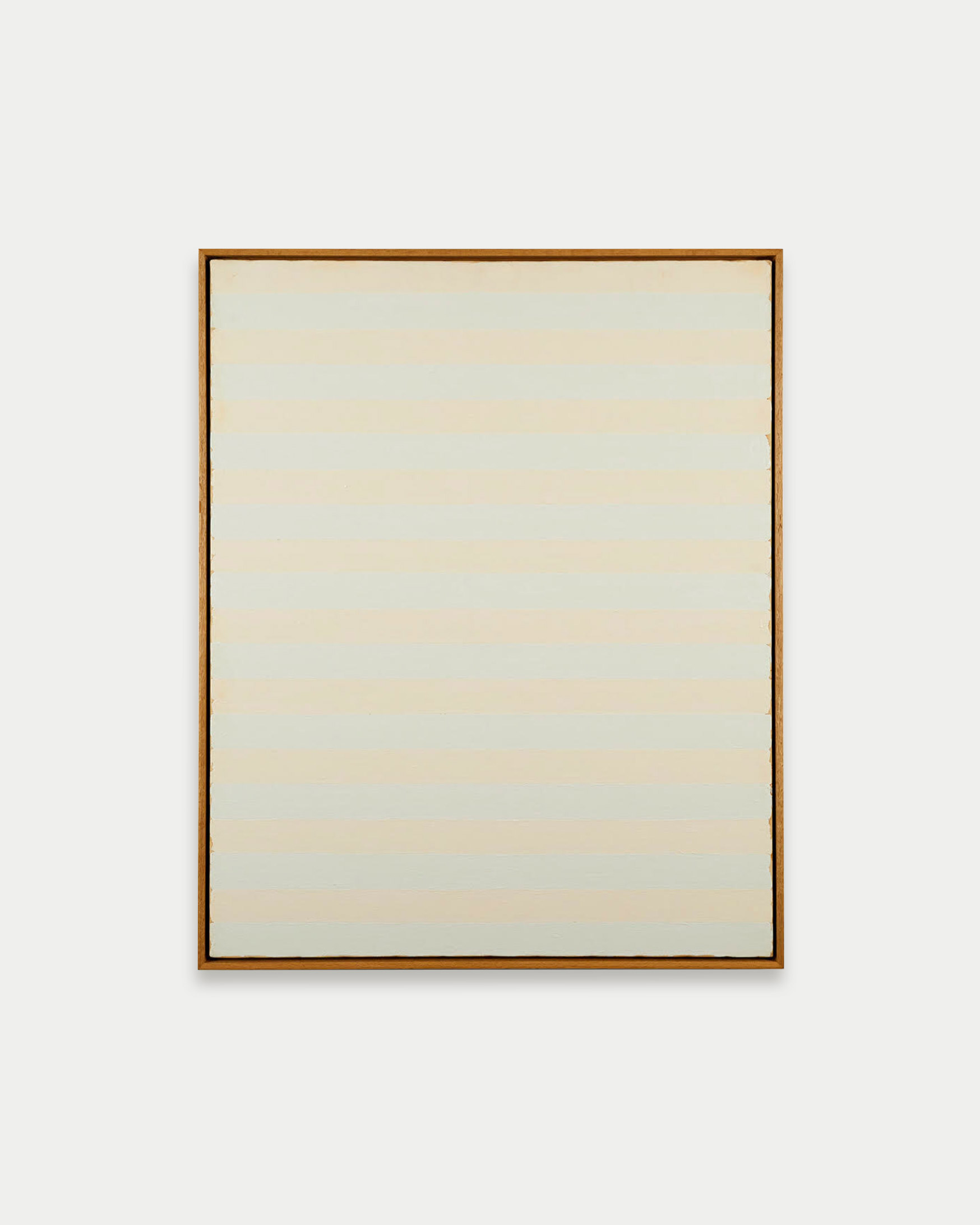Masaaki Yamada (1929-2010) was a Japanese painter who became known for his contributions to abstract painting in post-war Japan. He leaves behind a remarkable and diverse oeuvre.
Throughout his life, Masaaki Yamada created about 5,000 works (he numbered them all meticulously according to the alphabet and the decade of their creation), which can be divided into three main creative periods: still life “Still Life” (1948 to 1955), line works “Work” (1956 to 1995), and finally monochrome paintings “Color” (1998 to 2010).1
After graduating from high school, Yamada began painting in the late 1940s under the tutelage of Hasegawa Saburō – one of the pioneers of abstract Japanese painting. His first works were cubist-influenced still lifes with complex patterns, but from the mid-1950s he turned to a more reduced abstraction.
His “Work” series shows this evolution toward simple, rectangular shapes. In them, Yamada explores the form and outline of the canvas itself, blurring its boundaries through repetition, creating a series of paintings that are loosely yet closely connected. This approach demonstrates his ongoing search for a new artistic expression in postwar Japan.2
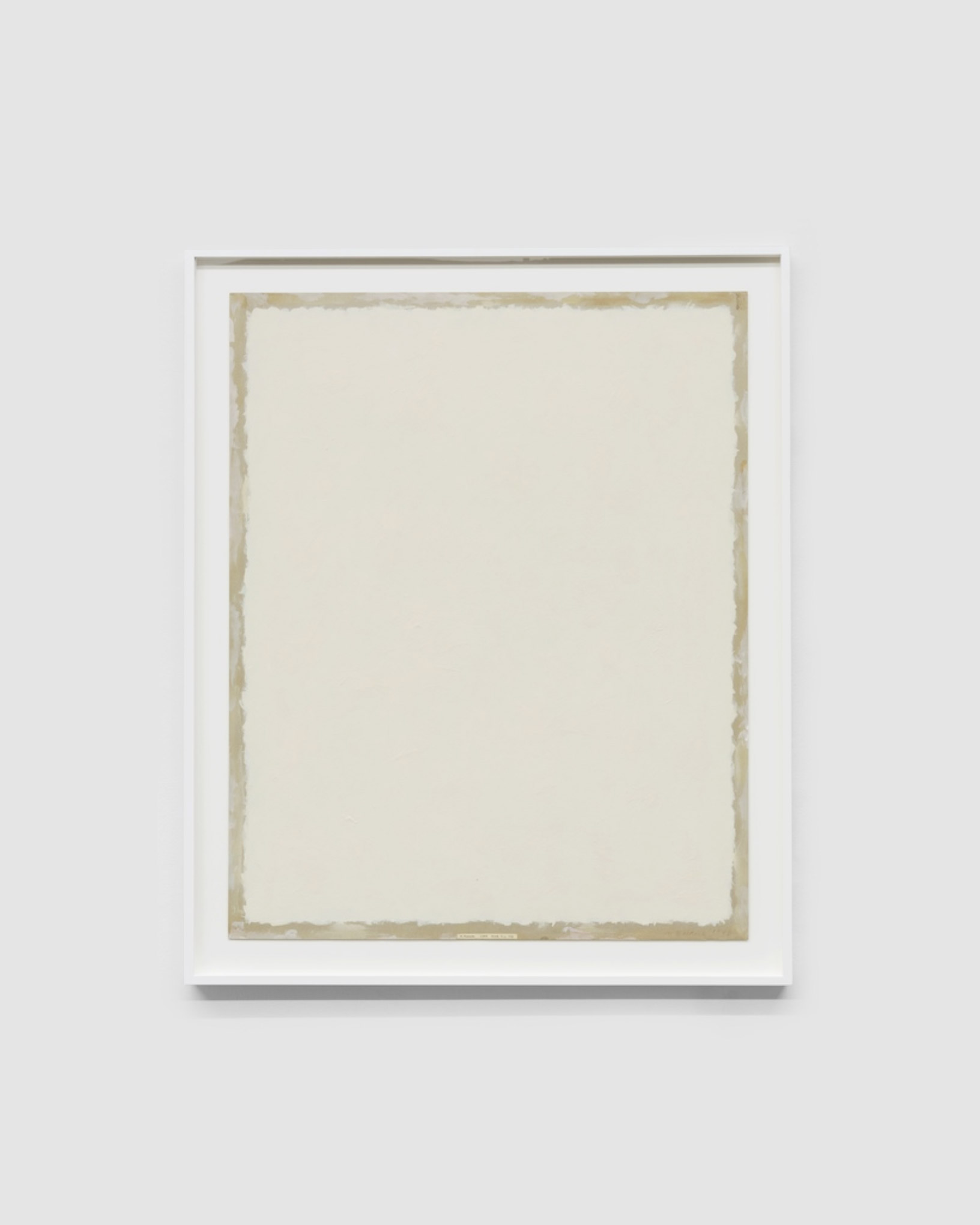
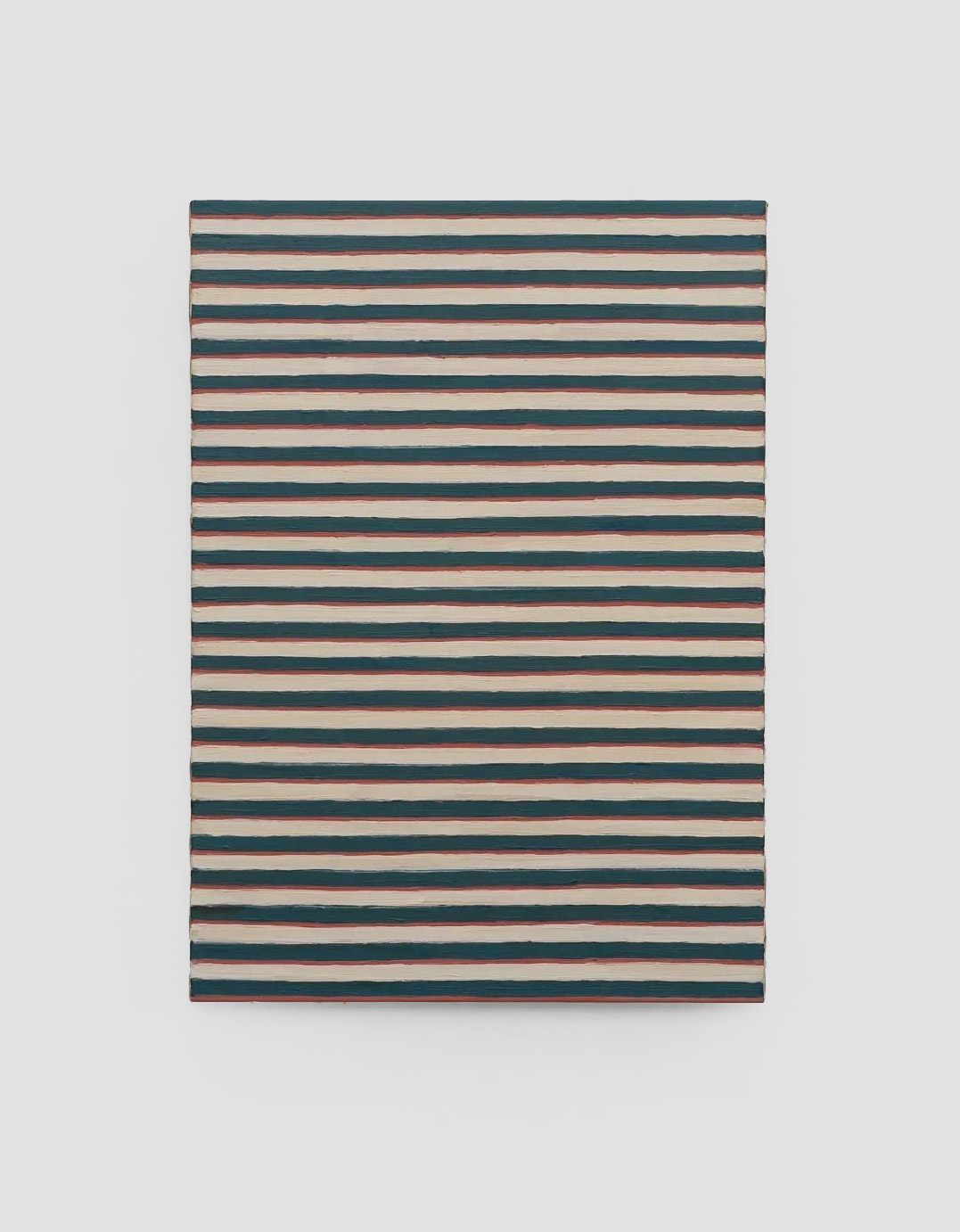
In his line works, you can see that these stripes were not simply painted flat on the canvas, but overlapped. Through these many layers, Yamada created a fascinating sense of depth. Around 1965, he painted fewer and fewer striped paintings, and he turned to monochrome paintings, which represent a calmer, more reflective aspect of his work.3
In the 1970’s he increasingly used subtle, grayish tones and divided the canvas into a grid. After he had great success with a solo exhibition in Tokyo in 1978, his style changed again. He began to work with strongly emphasized brushstrokes and used larger canvases, resulting in a more dynamic expression.3
For a painter, color is like a first memory.
Masaaki Yamada3
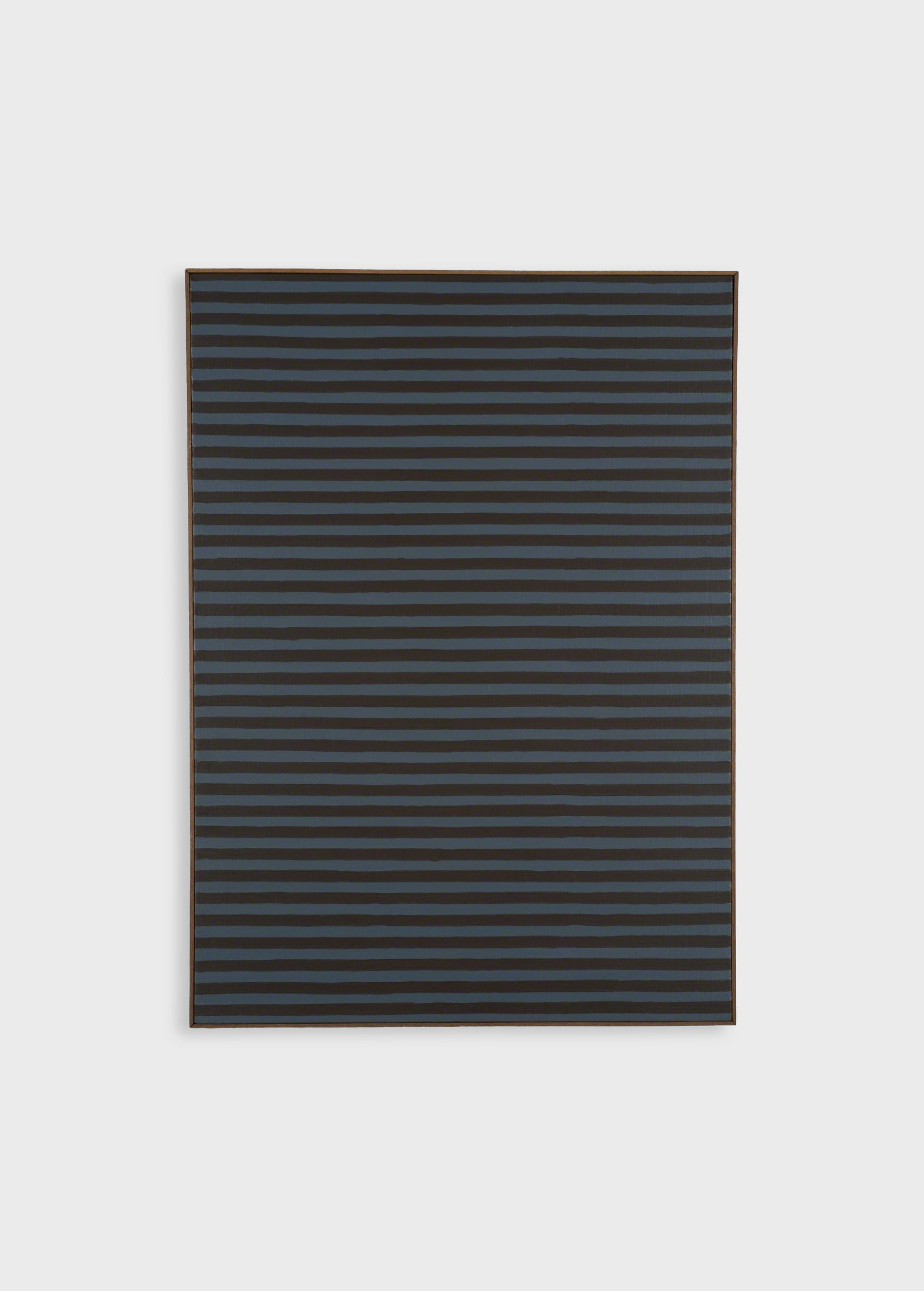
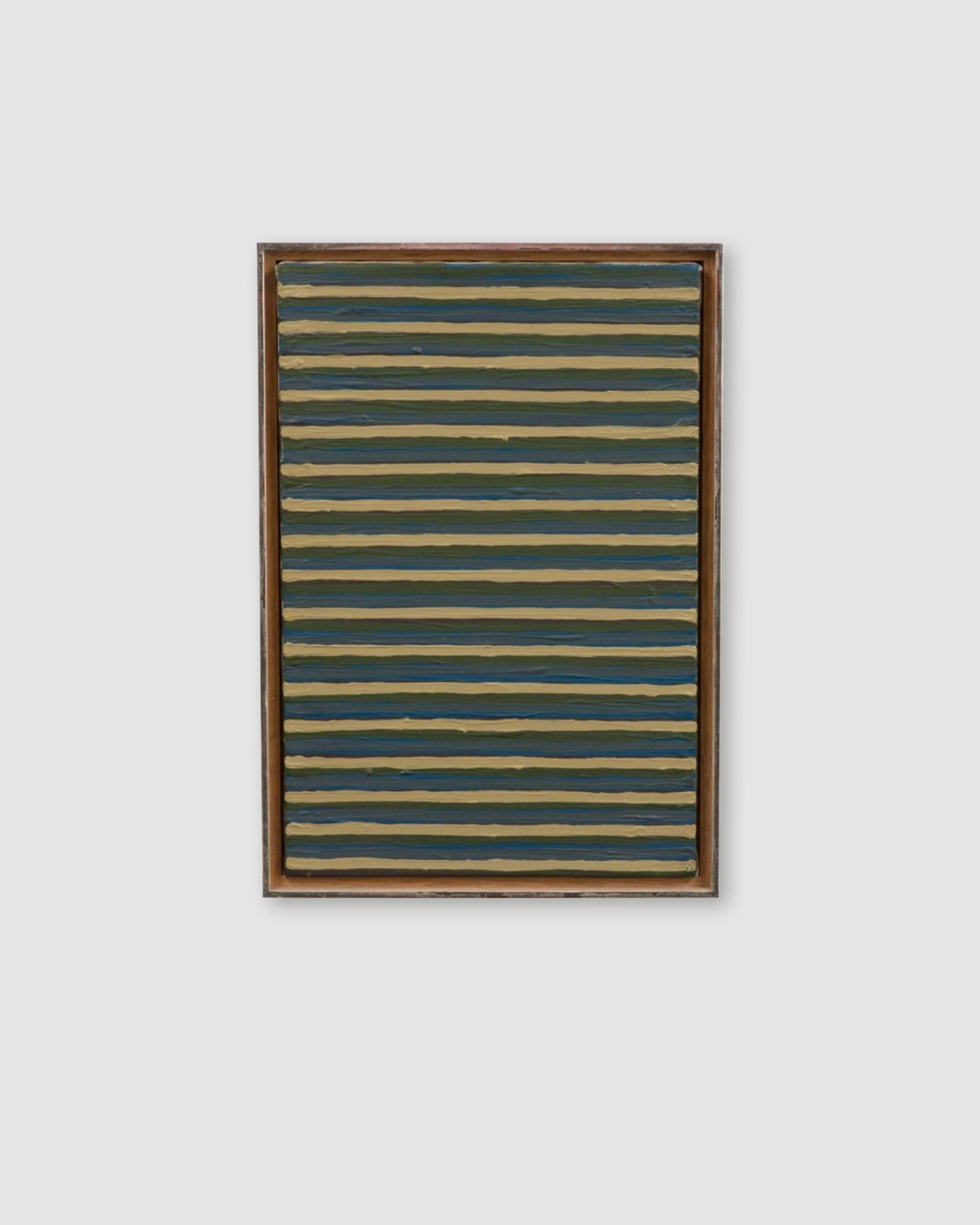
Throughout the first half of his career (from about 1949 to 1972), Masaaki Yamada filled 56 notebooks in which he recorded numerous sketches of his works, progress reports, and personal and artistic challenges. From daily works to exhibitions he attended, love stories, war memories, and the difficulties of being recognized as an artist. An exciting testimony to be able to dive into his mind. Some images from his notebooks were featured in the exhibition catalog at the National Museum of Modern Art in Kyōto.3
Masaaki Yamada’s remarkable oeuvre, subtly revealing deep emotional layers, reflects his ongoing search for identity and a new form of expression in the postwar era. His delicate, meditative approach makes his work a soothing yet challenging visual experience. Each of his paintings has its own personality – even though many of them look very similar.
Masaaki Yamada died in 2010, and six years later, part of his oeuvre was honored in a comprehensive retrospective shown at both the National Museum of Modern Art Tokyo and the National Museum of Modern Art Kyōto. Through these exhibitions, he received worldwide recognition.
If you want to see more about him, I recommend the comprehensive Visitor’s Guide of the National Museum of Modern Art, Kyōto and a video from the exhibition.
